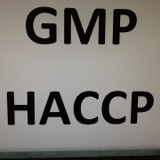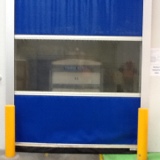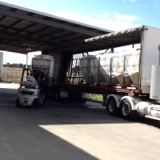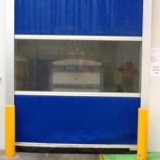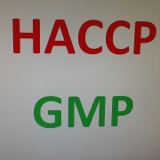Information
-
Document No.
-
Audit Title
-
Conducted on
-
Prepared by
1 Buildings and grounds
-
1.1 Buildings must be maintained in an orderly, neat and tidy condition and be sited away from incompatible activities.<br>
-
1.2 Adequate security arrangements must be in place to protect the site from undesirable contaminants (birds, insects, rodents, sabotage and so on).<br>
-
1.3 Site boundaries must be clearly identified.<br>
-
1.4 The building should be designed and maintained to prevent the accumulation of dust and airborne matter. The building should be designed to exclude rodents, vermin, birds and other pests and animals.<br>
-
1.5 Premises must be kept free from accumulated waste, overgrown vegetation and disused equipment.<br>
-
1.6 Protection from adverse weather must be provided for receiving and dispatch areas and materials or products in transit.<br>
-
1.7 The buildings should be well lighted and ventilated. Ventilation should be adequate to remove dust, odours, etc, and comply with EPA regulations.<br><br>
-
1.8 The finishing materials for the walls, floors, roof infrastructures and other surfaces should be smooth, or where this is not possible have a surface that permits effective cleaning.<br>
-
1.9 All lighting fixtures shall be protected to ensure product is not contaminated by breakage.<br>
2 Equipment
-
2.1 All equipment must be suitable for its intended use and should be designed for easy cleaning.<br>
-
2.2 Consideration to the design and positioning of machinery and channelling must be given so that any discharge or over spill from processing goes directly into bins and not onto the floor.
-
2.3 Production equipment must be free from unsuitable fastenings and temporary repairs and should not incorporate glass.<br>
-
2.4 Equipment shall be designed to achieve the required process parameters as rapidly as necessary in the interest of food safety and suitability to be effectively maintained.<br>
-
2.5 All plant, equipment and buildings shall be subject to a system of planned maintenance. Records of this maintenance must be kept.<br>
-
2.6 Weighing and measuring equipment must be of the appropriate degree of accuracy for the task being carried out and must be calibrated and checked at regular intervals and records kept.<br><br>
3 Waste Control
-
3.1 There must be adequate systems for the collation, collection and disposal of waste material. Waste must not be able to accumulate in any working areas in or outside of the factory.<br><br>
-
3.2 Defined waste areas must be established and segregated from the production activities.<br><br>
-
3.3 All waste containers must be clearly marked and suitably constructed.<br><br>
-
3.4 Waste disposal will meet legislative requirements.<br>
4 Cleaning and Housekeeping
-
4.1 All plant, equipment and factory environment must be kept clean, and well maintained, so as to minimise the risk of contamination.<br>
-
4.2 A written cleaning program must be available for all areas detailing the frequency of cleaning, the personnel responsible for cleaning operations, the materials and equipment to be used and the procedure to be followed.<br><br>
-
4.3 Cleaning equipment must be well maintained and used in a controlled manner. Storage areas for cleaning equipment must be clearly identified.<br>
-
4.4 Cleaning chemicals must be clearly labelled and securely stored. They must be stored separately from food and packaging materials.<br><br><br>
-
4.5 Production debris and spillage must be cleaned promptly and disposed of adequately.<br><br>
5 Staff Facilities
-
5.1 Staff facilities shall be designed and operated so as to minimise the risk of product contamination.<br><br>
-
5.2 Where appropriate, changing facilities shall be sited to allow personnel direct access.<br>
-
5.3 Outdoor clothing and other personal items shall be stored separate from workwear within the changing facilities.<br>
-
5.4 Toilets shall not open directly into production, packing or storage areas.<br>
-
5.5 Manufacturing areas must be equipped with a hand washing facility, which are provided with hot and cold water and adequate drying facilities.<br><br>
-
5.6 Smoking is only permitted in designated smoking areas.<br>
-
5.7 Dining areas must be isolated from production areas and suitably controlled to prevent contamination of product.<br><br>
-
5.8 Suitable provisions, away from production areas, must be made for the storage of food brought onto the premises by staff.<br>
6 Product Contamination Risk
-
6.1 Effective segregation of raw, unprocessed material from semi-processed and processed product must be applied.<br>
-
6.2 All ingredients and in process products must have appropriate shelf life control. Expired material must be segregated and scrapped.<br>
-
6.3 There must be adequate provision for the hygienic removal of scrap, materials generated during the manufacturing process.<br>
-
6.4 All ingredients, semi-processed and finished product must be identifiable from receipt and production through to dispatch, to maximise traceability and prevent cross contamination.<br><br>
-
6.5 Where practical the use of glass must be eliminated in all production areas and storage areas.<br>
-
6.6 The presence of wood in manufacturing areas must be kept to a minimum and where ever possible replaced.<br><br>
-
6.7 Pallets must be clean and well maintained and where possible made of plastic not wood.<br><br>
-
6.8 Adequate, appropriate and operational anti-contaminant devices such as magnets and inline sieves (redressers) must be installed on the process line.<br>The devices must have documented monitoring, testing and validated records.<br>
7 Raw Materials and Packaging Materials
-
7.1 A raw material acceptance procedure must exist.<br>
-
7.2 Storage areas must be organised and of sufficient size to permit the effective separation and identification of the materials stored in them.<br>
-
7.3 If any material fails to meet required acceptance criteria it must be placed on hold and fully labelled until:<br>a. Material is approved for use by an authorised person,<br>b. Disposed of, or<br>c. Returned to supplier.<br>Where the material is contaminated with pests, micro-organisms or parasites it must be isolated to prevent cross contamination risks.<br>
-
7.4 All materials must also be handled so that the rotation of stock occurs on a first in first out (FIFO) basis.<br>
-
7.5 Raw materials and packaging materials must be stored in conditions that maintain the quality and integrity of the product.<br>
-
7.6 All materials must be clearly labelled at all times.<br><br>
8 In Process Control
-
8.1 The following documentation must be controlled and available for reference in the appropriate areas of this site:<br><br>• Recipes (FDR)<br>• Work Instructions/Operating Procedures (SOPs)<br>• Production Operating Specification (SQS)<br>• Material Safety Data Sheets (MSDS)<br><br>
-
8.2 Control systems must be in place for specified critical parameters and critical control points.<br>
-
8.3 Facilities for grinding, mixing or any other specific process shall be suitable to meet the specified condition for ensuring food safety.<br>
9 Finished Product
-
9.1 Specifications must be available where food safety checks are performed.<br>
-
9.2 Food safety checks, according to production specification, must be conducted and recorded. These must include:<br><br>• Visual Check<br>• Sieve Check<br>• Transportation/Transportation Container Assessment<br><br>
-
9.3 Returned powders must be clearly labelled as such and kept separately in a designated area.<br>
-
9.4 A traceability system must me maintained at the point of despatch. This system must be able to trace product and their raw materials back to receiving and production.<br>
-
9.5 The cleanliness and integrity of all vehicles and transport containers (IBC’s) must be inspected before loading.<br>
10 Pest Control
-
10.1 A suitable pest control procedure must be routinely followed and documented, using appropriately trained staff or a reputable pest control contractor.<br>
-
10.2 Frequent monitoring of pest activity must take place according to the documented program.<br>
-
10.3 All pest control audits and treatments must be recorded. These records must contain full details.<br>
-
10.4 Where there is risk of storage product insects, such as moth infestation, pheromone moth traps must be used.<br>
-
10.5 There must be sufficient space between walls and materials to allow adequate cleaning and pest monitoring. Waste bins must be covered.<br>
-
10.6 Locations of bait station and pheromone traps and any other pest control measures must be identified on a site plan.<br>
-
10.7 Where possible incoming raws shall be checked for pest infestation.<br>
-
10.8 No animals are permitted on the grounds.<br>
11 Personnel
-
11.1 Appropriately qualified and/or experienced persons must be available to direct and supervise operations.<br>
-
11.2 Personnel must be trained in both GMP generally and in their duties.<br>
-
11.3 Site hygiene standards must be documented and enforced.<br>
-
11.4 Procedure must be in place to restrict the entering of food handling areas by personnel suffering the following ailments:<br>• Gastric upset, vomiting, diarrhoea<br>• Infectious illness<br>• Infected wounds<br><br>
-
11.5 No items (pens, etc) must be worn externally above waist level.<br>
-
11.6 Earplugs must be string connected.<br>
-
11.7 Hair below shoulder length must be tied up or in a hair net.<br>
-
11.8 Eating must be strictly prohibited in all manufacturing areas.<br>
-
11.10 Smoking is permitted in designated smoking areas only.<br>
-
11.11 Minor cuts and wounds must be covered by blue metal detectable plaster.<br>
-
11.12 Fingernails must be kept short and clean.<br><br><br>
-
11.13 Factory mobile phones, radios, etc, must be enclosed appropriately.<br>
-
11.14 The following items must be prohibited from the factory:<br><br>• Watches and jewellery (wedding band permissible if covered by blue metal detectable plaster)<br>• False eyelashes, nails and nail varnish, the excessive use of make-up and strong smelling perfume.<br>• Any glass not on glass register, excluding reading glasses<br>• Hair combs/brushes<br>• Personal food/drink/sweets/chewing gum<br>• Newspapers and magazines<br>• Anything unnecessary for work.<br><br>
12 Protective Clothing
-
12.1 Suitable protective clothing and footwear, or that indicated by OH&S regulations, must be worn by all staff in manufacturing areas.<br>
-
12.2 Protective clothing must be cleaned and/or replaced at fixed intervals or when soiled.<br>
13 Training
-
13.1 Procedures must be established which identify training competency requirements for all staff to carry out these tasks.<br>
-
13.2 All personnel entering manufacturing areas must receive an appropriate level of training on basic food hygiene.<br>
-
13.3 Validation systems for training must be in place.<br>
-
13.4 Full training records must be kept.<br>
-
13.5 Trainers must be appropriately qualified to train.<br>
-
13.6 There must be adequate supervision of new personnel.<br>
14 Internal Auditing
-
14.1 An internal audit system must be defined.<br>
-
14.2 Audits must be scheduled and scopes defined.<br>
-
14.3 Audit results must be brought to the attention of personnel responsible for audited area. Corrective actions must be agreed on.<br>
-
14.4 Records of all internal audits and there corrective actions must be kept.<br>
15 HACCP
-
15.1 Are all the products and process steps clearly defined by the HACCP plan?
-
15.2 Have CCP steps been identified and validated for all significant hazards defined in the Hazard analysis? <br>
-
15.3 Does the vendor have an approved Mars specification which includes all approved ingredient sources (suitable to meeting the product design) for each premix?<br>
-
15.4 Are ingredients properly identified upon receipt by verifying all paperwork and vendor-applied pallet labels or bar codes?<br>
-
15.5 Are adjustments made to equipment in a timely manner when found to be out of calibration?<br>
-
15.6 Is there a documented cleaning/hygiene/sanitation program in place?<br>
-
15.7 Is there an effective internal audit program for all areas of food safety, quality and legality across the business to ensure conformance to Quality standards and documented procedures? <br>
-
15.8 Has the facility been hygienically designed?<br>
-
15.9 Are all the products and process steps clearly defined by the HACCP plan?<br>
-
15.10 Have CCP steps been identified and validated for all significant hazards defined in the Hazard analysis? <br>
-
15.11 Are change-management practices followed for process, procedure, ingredients, suppliers, personnel, etc, that could impact product performance?<br>
-
15.12 Is there an effective program in place to ensure packing and production areas are designed and operated in a hygienic manner?
-
15.13 Has the HACCP program been reviewed by the team ?
-
15.14 Do flow diagrams accurately reflect the process?<br>
-
Corrective actions/notes
-
Corrective actions to be completed by:
-
General Manager
